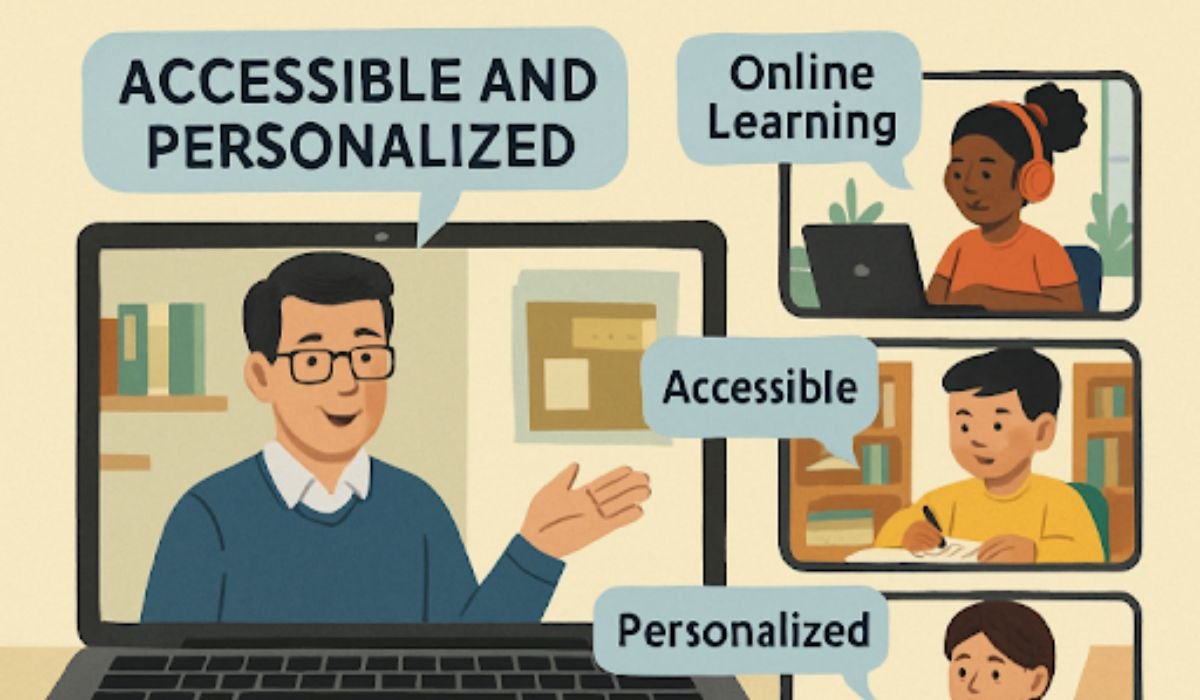Table of Contents
- Introduction
- Expanding Accessibility
- Personalized Learning Experiences
- Integration of Advanced Technologies
- Enhancing Teacher Professional Development
- Challenges and Considerations
- Future Directions
- Conclusion
Online education transforms teaching delivery, blending flexibility with innovative tools that expand access to learning worldwide. Virtual platforms enable educators to reach diverse learners, personalize instruction, and integrate multimedia resources for richer experiences. At the same time, teachers are adopting new strategies to foster engagement, collaboration, and critical thinking in digital spaces. While challenges like equity and training remain, the continued growth of online education is reshaping teaching into a more adaptable, inclusive, and technology-driven profession.
Introduction
Online education is one of the most profound innovations shaping the future of teaching today. More than just a shift in where and when learning occurs, it has upended traditional pedagogical boundaries, providing a pathway for educators and students to participate in new, exciting modalities. Educators pursuing advancement, such as an online masters in education, can fully appreciate how these digital transformations foster adaptive and inclusive learning ecosystems for diverse populations.
This shift is not merely about greater convenience—it reflects a fundamental reimagining of what education can achieve. Online education removes barriers, empowers learners with customized experiences, and facilitates deeper engagement through technology. As a result, both teaching and learning are becoming more relevant, personal, and practical.
Expanding Accessibility
Perhaps the most significant benefit of online education is its ability to expand accessibility. Students from rural, remote, or underserved areas now have access to world-class instruction and resources once available only to those in major cities or countries with robust educational infrastructure. Platforms such as Massive Open Online Courses (MOOCs) and K-12 online schools have democratized access, ensuring students of all backgrounds can benefit from quality education.
This expansion contributes to global inclusivity. According to Edutopia, online education programs are increasingly vital in promoting lifelong learning, retraining opportunities for adults, and equitable education for those with physical disabilities or logistical constraints.
Personalized Learning Experiences
Unlike traditional classrooms, digital learning environments can be highly adaptive. Online education platforms use data and analytics to create individualized learning pathways, adjusting to each student’s pace, background knowledge, and preferences. Through assessments and interactive modules, adaptive technology identifies exact learning gaps, offering targeted practice and content reinforcement.
This personalized approach boosts comprehension and retention and encourages students to take charge of their education. Digital tools make customized learning possible and practical for learners who require more time on specific subjects or accelerated advancement.
Integration of Advanced Technologies
Artificial Intelligence and Real-Time Support
Adopting artificial intelligence (AI) in online education transforms how instructors teach and students learn. AI-driven platforms facilitate real-time feedback, automated grading, and intelligent tutoring systems. These advancements allow teachers to focus on individualized support while ensuring learners receive immediate and actionable insights into their progress.
Virtual Reality and Immersive Learning
Virtual reality (VR) brings subjects to life, offering immersive experiences that deepen conceptual understanding. Whether exploring ancient cities in a history class or simulating scientific experiments, VR helps bridge the gap between theory and reality. Such technologies cultivate greater engagement and foster curiosity-driven exploration, preparing students for the demands of a digital workforce. For further insights into technology’s impact on education, Forbes offers an in-depth analysis.
Enhancing Teacher Professional Development
Online education is also advantageous for educators. Teachers can access an ever-expanding array of professional development resources, workshops, and collaborative forums with peers worldwide. This ongoing exposure to best practices and new methodologies keeps educators agile and informed, leading to improved student outcomes and the adoption of innovative teaching strategies.
Online professional learning communities and webinars allow teachers to share ideas, troubleshoot classroom challenges, and stay current with project-based learning and digital literacy trends. The global nature of these communities enriches professional growth by promoting diverse perspectives and fresh pedagogical approaches.
Challenges and Considerations
While online education offers flexibility, accessibility, and innovative learning opportunities, it also presents notable challenges that must be addressed to be truly effective. A key issue is the digital divide, where students without reliable internet or adequate devices face barriers to participation. Educators, too, must adapt by learning how to use various digital platforms while finding ways to keep students engaged virtually. Beyond access, equity remains a pressing concern, especially for learners needing extra structure, social interaction, or specialized accommodations. To succeed, online learning requires well-planned instructional design, strong technical and emotional support systems, and a sustained commitment to reducing disparities so every student can thrive in digital environments.
Future Directions
Emerging Trends and Hybrid Learning
The future of teaching lies in further integrating advanced technologies and developing blended or hybrid learning models. By combining the strengths of online and traditional in-person instruction, educational institutions can create flexible, student-centered approaches that respond to diverse needs and preferences.
Trends such as gamification, learning analytics, AI-powered personalized tutoring, and global classroom partnerships will likely define the next chapter in education. As the landscape evolves, teachers and students will benefit from expanded opportunities, enhanced personalization, and a more connected global education community. Resources like The New York Times Learning are valuable reference points for continual updates on online learning trends.
Conclusion
Online education has moved far beyond being a short-lived trend; it has become a transformative force reshaping how knowledge is shared and accessed worldwide. Through digital platforms, students gain the flexibility to learn at their own pace, breaking down barriers of geography, cost, and accessibility. Educators, meanwhile, can leverage technology to deliver dynamic, interactive lessons tailored to diverse learning styles. The growth potential is immense, from virtual classrooms and adaptive assessments to collaborative tools that connect learners globally. This shift encourages inclusivity, innovation, and lifelong learning opportunities. By embracing these advancements, the future of education becomes more adaptive, impactful, and equipped to meet the evolving needs of students and teachers in a changing world.
YOU MAY ALSO LIKE: Hire Homework Assignments Writing Help: A Smart Choice for Busy Students

